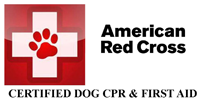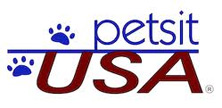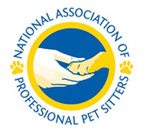Responsible Dog Ownership Top 10 Tips
When we think about responsible dog ownership we mostly think of providing food, shelter, veterinary care and love. But being a responsible dog owner goes way beyond those minimum requirements. Some questions to ask yourself… How am I providing for my dog’s mental health and well being? How am I and my dog impacting others? The environment? With these and other questions in mind here are my Top 10 tips for responsible dog ownership.
-
The Doctor is In: Routine Veterinary Care, annual checkups are a must to promote life long health. Your vet will check for Heartworms (mosquitos carry
 heartworms) as well as other types of worms (let’s face it, dogs get into stuff, eat gross stuff which can harbor all kinds of things you don’t want in your dog!), do blood work which can alert to signs of illness your dog may otherwise not be showing, and generally share helpful information to keep your dog in top shape.
heartworms) as well as other types of worms (let’s face it, dogs get into stuff, eat gross stuff which can harbor all kinds of things you don’t want in your dog!), do blood work which can alert to signs of illness your dog may otherwise not be showing, and generally share helpful information to keep your dog in top shape. -
Can I Get a Walk, Walk?: Regular Exercise is a must for dogs to help keep them fit and healthy both physically and mentally. If you laid around all day you’d get bored, depressed and most likely not be too happy. Something as simple as a daily walk can burn energy, help keep their joints in better shape and increase the bond between you and your dog.
-
Poop Patrol: This is a biggie. Picking up after your dog while on walks is the responsible thing to do. Dog poop carries disease and intestinal parasites. No one likes to find someone else’s dog poop in their yard. Always keep a bag tied to your leash so you are never caught without and dispose of it properly.
-
Who Are You?, Who, Who, Who, Who? : Properly ID your dog. Even if your dog is microchipped a collar and tags are a must. If your dog gets out of your house or yard, neighbors are more likely to approach it if it is wearing a collar and tags. Plus it’s quick and easy for them to identify the owner via the tags. If your dog isn’t wearing a tag then your dog has to be taken to a vet or shelter to be scanned for a microchip. A very small percentage of people are willing to take that extra step vs just reading your phone number and calling you.
-
Escape from Alcatraz: Secure Your Yard. First, dogs shouldn’t be left out in a yard unattended. They are dogs! They dig, jump, get out typically out of boredom. How would you like to sit out in your yard for hours on end? But, if you are leaving your dog outside be sure that your yard, fence, gates etc are secure! When dogs escape yards they are at a high risk of getting hit by a car, getting into a fight with another dog not to mention running up on some unsuspecting neighbor who is responsibly out walking their dog! Even if both dogs are nice individually, they might not be a good match together. This can cause a fight which can cause harm to one or both dogs and the human involved.
-
If You Like It Then You Better Put a Leash On it: Unless your dog is fully trained and under 100% voice control you should have a leash on your dog at all times
when out walking in a general public area, neighborhood, park etc. To do anything less is irresponsible. I hear all the time “he’s friendly!”. We as mentioned before, that means nothing. Let’s put that in a human context… If a perfect stranger ran up to you, invaded your personal space and got over friendly, or worse aggressive with you, how would you feel? Nervous? Scared? Angry? Reactive? That is exactly how most dogs feel when another dog runs up on them. It does not matter if both dogs are perfectly friendly normally, this is a recipe for disaster. Plus if a scuffle or fight breaks out it can dramatically change both dog’s behaviors in the future in regards to how they feel about other dogs as well as how they feel about their owners who did not protect them from this incident. Don’t do it. LEASH YOUR DOG!
-
Spa Day for Dogs? You Bet: Grooming is important for the health of your dog. From teeth brushing or teeth cleanings (Brushing your dog’s teeth just 3 times a week, and chances are your dog will never need professional teeth cleanings at the vet. Saving you tons of money and saving your pet from having to go under anesthesia.) to nail clipping (keeping your dog’s nails short is the most comfortable for them. Nails allowed to grow even to where they are touching the ground affect how your dog stands, and can be painful over time. How would you like to walk on your finger and toenails? Ouch!) and brushing fur which stimulates the skin, and for long haired dogs helps to keep the fur from getting mats, which are very painful.
-
Animal Control: I’m talking Spay and Neuter people. There are already some many pets dying every day in shelters because of over population. A responsible dog owner helps by making sure their pet is not adding to the problem. If you are waiting until your dog is a certain age before spay/neuter than please take extra precautions to make sure your dog does not come in contact with another intact dog prior to their procedure. An intact male dog can smell a female in heat for miles. They will jump fences, dig out etc to go in search of that female. The highest percentage of dogs found dead on the road are intact males.
-
Baby It’s Cold Outside (or Hot)!: Leaving a dog outside in extreme weather is dangerous. Every year dogs die of heat exhaustion and hypothermia. Even humidity plays a factor. “It’s important to remember that it’s not just the ambient temperature, but also the humidity that
can affect your pet,” says Dr. Barry Kellogg, VMD, of the Humane Society of Veterinary Medical Association. “Animals pant to evaporate moisture from their lungs, which takes heat away from their body. If the humidity is too high, they are unable to cool themselves and their temperature will skyrocket to dangerous levels—very quickly.” If you must keep your dog outside then make a place where they can seek shelter from the hot or freezing temperatures. In the summer, be sure they have access to shade that doesn’t obstruct airflow like under a tree or tarp, and plenty of fresh cool water. In the winter be sure their water doesn’t freeze and their shelter blocks airflow and keeps their body heat in, like and underground dog house.
-
Stop, Drop & Stay: A Well Behaved Dog=Happier Dog & Owner. Training is one of the most important aspects of responsible dog ownership and is a critical component of a happy, healthy and safe dog and can literally save a life. Dogs practicing bad behaviors are not at their happiest and are often nervous, anxious, bratty, entitled or even dangerous. While starting early is best (as early as 8 weeks), a dog can learn at any life stage. Basic obedience is the foundation upon which overall good behaviors are built. Teaching your dog good choices they can make and rewarding them for doing so can go along way. Being consistent in the message of good behavior is equally important. If the rules change from day to day (today you can jump on me, tomorrow you can’t jump on guests in the home) your dog becomes confused at first but quickly learns the rules don’t always apply so “I’ll see what I can get away with.” The simple commands of Sit, Down, Place, Come and Heel are invaluable in teaching your dog to listen to you. If you are already struggling with negative behaviors, contact a professional dog trainer to start the process of transforming your dog into a happier pup. It’s never too late!
As you can see, responsible dog ownership is more than just food, shelter and love. It’s taking into consideration you, your dog and those around you. Following these tips will have you and your dog living your best life.
 when out walking in a general public area, neighborhood, park etc. To do anything less is irresponsible. I hear all the time “he’s friendly!”. We as mentioned before, that means nothing. Let’s put that in a human context… If a perfect stranger ran up to you, invaded your personal space and got over friendly, or worse aggressive with you, how would you feel? Nervous? Scared? Angry? Reactive? That is exactly how most dogs feel when another dog runs up on them. It does not matter if both dogs are perfectly friendly normally, this is a recipe for disaster. Plus if a scuffle or fight breaks out it can dramatically change both dog’s behaviors in the future in regards to how they feel about other dogs as well as how they feel about their owners who did not protect them from this incident. Don’t do it. LEASH YOUR DOG!
when out walking in a general public area, neighborhood, park etc. To do anything less is irresponsible. I hear all the time “he’s friendly!”. We as mentioned before, that means nothing. Let’s put that in a human context… If a perfect stranger ran up to you, invaded your personal space and got over friendly, or worse aggressive with you, how would you feel? Nervous? Scared? Angry? Reactive? That is exactly how most dogs feel when another dog runs up on them. It does not matter if both dogs are perfectly friendly normally, this is a recipe for disaster. Plus if a scuffle or fight breaks out it can dramatically change both dog’s behaviors in the future in regards to how they feel about other dogs as well as how they feel about their owners who did not protect them from this incident. Don’t do it. LEASH YOUR DOG! can affect your pet,” says Dr. Barry Kellogg, VMD, of the Humane Society of Veterinary Medical Association. “Animals pant to evaporate moisture from their lungs, which takes heat away from their body. If the humidity is too high, they are unable to cool themselves and their temperature will skyrocket to dangerous levels—very quickly.” If you must keep your dog outside then make a place where they can seek shelter from the hot or freezing temperatures. In the summer, be sure they have access to shade that doesn’t obstruct airflow like under a tree or tarp, and plenty of fresh cool water. In the winter be sure their water doesn’t freeze and their shelter blocks airflow and keeps their body heat in, like and
can affect your pet,” says Dr. Barry Kellogg, VMD, of the Humane Society of Veterinary Medical Association. “Animals pant to evaporate moisture from their lungs, which takes heat away from their body. If the humidity is too high, they are unable to cool themselves and their temperature will skyrocket to dangerous levels—very quickly.” If you must keep your dog outside then make a place where they can seek shelter from the hot or freezing temperatures. In the summer, be sure they have access to shade that doesn’t obstruct airflow like under a tree or tarp, and plenty of fresh cool water. In the winter be sure their water doesn’t freeze and their shelter blocks airflow and keeps their body heat in, like and 






